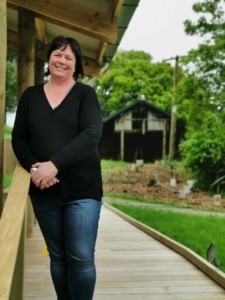November 4, 2021

Dr Emily Nelson
The Research and Innovation Centre has begun a Q&A series with EIT researchers. Here we speak to researcher Dr Emily Nelson, who is a Senior Lecturer and Programme Coordinator, Bachelor of Teaching (Primary) at EIT.
1. How long have you been a researcher?
I have been an active researcher since I interviewed my Poppa for a Narrative Research paper in 1999 as part of my Master’s in Education degree.
2. Why do you enjoy doing (quantitative and qualitative) research?
I am a qualitative researcher, specialising in action research using image-based methods of drawing and photography. I love the surprises I get with research from listening to people sharing unique perspectives and experiences through images and dialogue. I learn through the eyes of others. I usually have a pressing need to answer the research questions I investigate too, the projects I take on are important to my work and to promoting socially just educational conditions for educators and students.
3. What research have you done recently or are currently working on?
I am currently working on documenting the Learning in Nature Project associated with EIT’s Ōtātara Outdoor Learning Centre and how it is valued by the range of participant groups that visit and learn there. I am co-researching with Professor Bronwen Cowie at University of Waikato and Chelsea Sellars. I love research collaborations. We are using a photovoice design and I am especially intrigued by the perspectives of learning in the outdoor environment shared by a group of primary students who have made the OOLC part of their school community over the past couple of years.
4. When and where has or will this be published?
We were 48 hours from sharing this research as a photo exhibition at EIT but with the Level 4 lockdown this event has been postponed. In the meantime, Professor Cowie and I are writing two papers, one on the OOLC as a palimpsestic landscape that offers a time capsule of curriculum possibilities for all age groups, and one on the visual data nuggets we have produced as part of our image-based research approach. We will also be presenting these papers at the upcoming Australian Association for Research in Education (AARE) Conference in late November.
5. What has been your most significant research project?
In 2016 my colleague Leigh Johnson and I conducted focus group research to better understand how student teachers learn to teach in Innovative Learning Environments (ILE) on practicum. ILEs are a recent innovation in New Zealand schools, readily taken up by educators, but at that time significantly under-researched for initial teacher education programmes. It was unusual and exciting to be conducting research in an area where there was very little literature and no policy guidance.
6. What difference has it made/what impact has it had?
Our ILE research has been well-received in New Zealand and internationally and recognised by other scholars as providing an important contribution to initial teacher education. In our own Bachelor of Teaching (Primary) programme, we have changed the design of our practicum placement preparation, support and assessment to take account of the increasingly collaborative nature of teaching. We have expanded our research to examine the perspectives and experiences of school-based supervising teachers and teacher educators also. This work was recently published in the New Zealand Journal of Educational Studies Special Issue on Learning Environments and our work has been included in two books on ILEs and teachers’ work.

